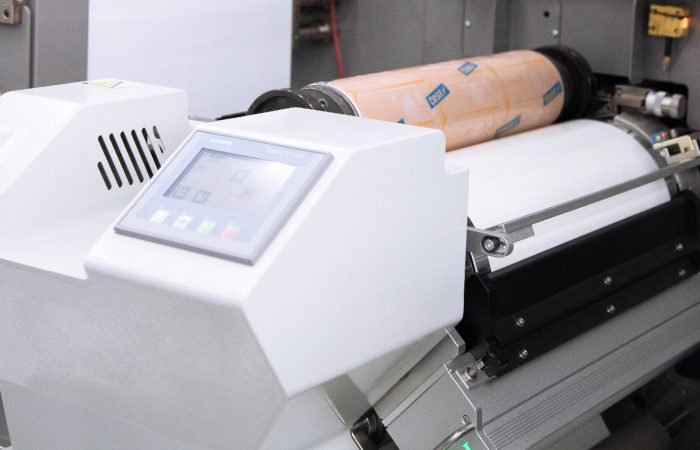Maintaining peak performance in LED UV offset printing systems requires a blend of technical precision and proactive care. These systems thrive when operators understand the interplay between mechanical components, UV curing dynamics, and substrate-specific requirements. Let’s break down actionable strategies that keep presses running smoothly across label, flexo, offset, and narrow-web applications.
Daily Checks Prevent Costly Downtime
Start each shift by inspecting UV lamp arrays for debris accumulation. Even microscopic dust on LED chips can create uneven curing patterns. Use lint-free swabs with isopropyl alcohol (90% purity) for cleaning – never abrasive materials. Monitor heat sink temperatures; consistent readings between 40-60°C typically indicate proper thermal management. For hybrid systems using both LED and conventional UV, check shutter mechanisms daily to prevent accidental exposure during non-curing phases.
Calibration Isn’t Just About Numbers
While spectrophotometers are essential for color matching, tactile tests still matter. Run a thumb smear test on cured inks: proper polymerization should leave zero residue. Time your curing process against substrate speed – under-cured inks feel tacky, while over-cured materials may show yellowing. For label presses, conduct weekly register alignment checks using micro-adjustment tools. Narrow-web operators should recalibrate web tension sensors every 150 operating hours.
Ink System Maintenance Varies By Process
Flexo users: Replace anilox rolls every 18-24 months depending on cell volume wear. Offset teams: Clean dampening system rollers with pH-neutral solutions to prevent rubber degradation. UV inks demand particular attention – filter recirculation systems monthly to remove gelatinous buildup. Always maintain ink viscosity between 12-18 seconds in a Zahn #2 cup, adjusting for ambient humidity shifts.
Substrate-Specific UV Adjustments
Thin label stocks require 10-15% lower UV intensity than rigid packaging materials to prevent scorching. Metallized substrates? Increase peak irradiance by 20% but reduce exposure time by 30% to achieve curing without reflective interference. For heat-sensitive films, implement pulsed UV modes with 50ms bursts. Keep a wavelength chart handy – 385nm LEDs work best for white inks, while 395nm handles metallics more effectively.
Mechanical Components Need Love Too
Lubricate chain drives with synthetic grease every 400 hours, but keep it away from UV optical components. Check blanket cylinder hardness quarterly – a 2-point Shore A drop means replacement time. For gear-driven presses, analyze gear backlash every six months using dial indicators. Don’t forget auxiliary systems: chiller fluid should be replaced annually, and air compressors need daily moisture purges.
Troubleshooting Common Issues
Curing problems? First verify the LED array’s output with a radiometer – degradation below 80% original intensity warrants bulb replacement. If ink adhesion fails, test surface energy with dyne pens – substrates below 38 dynes need corona treatment. Ghosting in offset prints often traces to worn bearer rings, not ink formulation. For web wrinkles in narrow-web presses, check nip roller parallelism before adjusting tensions.
Environmental Factors Matter
Maintain shop humidity between 45-55% – lower levels increase static, while higher humidity affects ink spread. Install IR thermometers to monitor substrate temperature post-curing; ideal ranges are 50-60°C for paper, 40-50°C for films. Dust control is non-negotiable – HEPA filters in air handling systems reduce coating defects by up to 70%.
Document Everything
Create a colorimetric log tracking Delta E values across jobs. Record UV dosage settings for repeat orders – what worked for 12pt C1S board won’t suit 18pt microflute. Track component lifespans: modern LED arrays last 15,000-20,000 hours, but drivers may fail sooner. Analyze maintenance records monthly – if washup time increases by 15%, it’s likely time for a full system deep clean.
Training Beats Repairs
Cross-train operators on both mechanical and chemical aspects. A pressman who understands photoinitiator chemistry can troubleshoot curing issues faster. Run quarterly calibration drills using NIST-traceable instruments. Encourage teams to share findings – that odd vibration the night shift noticed might predict a failing servo motor.
Future-Proofing Investments
When upgrading components, prioritize UV systems with modular designs – swappable wavelength arrays adapt to new ink chemistries. Consider IoT-enabled sensors for predictive maintenance; vibration analysis can detect bearing wear months before failure. For mixed-substrate shops, look for presses with automatic UV intensity adjustment based on inline spectrophotometer readings.
Consistency separates adequate operations from exceptional ones. Pair rigorous maintenance schedules with hands-on process knowledge, and these advanced printing systems will deliver razor-sharp dots, vibrant colors, and reliable performance through millions of impressions. The real magic happens when engineering precision meets practical shop floor wisdom – that’s where print quality and profitability intersect.












